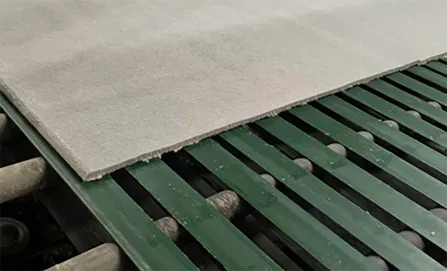Dec . 25, 2024 07:40 Back to list
Main Tee for Ceiling Grid Installation and Design Solutions
Understanding Ceiling Grid Main Tee in Modern Construction
In contemporary construction and interior design, the ceiling grid system plays a vital role in both aesthetics and functionality. Among the various components of this system, the main tee is a fundamental element. It serves as the backbone of the grid, supporting the overall structure and helping to create a clean, open ceiling space suitable for a variety of environments, from commercial buildings to residential homes.
What is a Ceiling Grid?
A ceiling grid system consists of a framework of metal components that are suspended from the structural ceiling. It is primarily composed of main tees, cross tees, and edge moldings. This modular system allows for the easy installation of ceiling tiles, panels, or other finishing materials. The ceiling grid not only provides support but also contributes to the acoustic properties, aesthetics, and fire safety of a room.
The Role of Main Tee
Main tees are the long, horizontal sections of the grid system, typically running in one direction across the room. They are crucial for supporting the weight of the ceiling tiles and for maintaining the overall alignment and stability of the ceiling grid. Usually made from galvanized steel, main tees are both lightweight and strong, allowing for easy installation and long-term durability.
One of the significant advantages of using main tees is their ability to facilitate the installation of various ceiling materials. Whether it’s acoustic tiles, light fixtures, or air vents, the main tees provide a robust framework that can accommodate diverse design needs. This flexibility is especially beneficial in commercial spaces where design requirements may frequently change.
ceiling grid main tee

Installation Process
The installation of a ceiling grid system, including the main tee, is a systematic process. First, the dimensions of the room are measured, and the desired height of the ceiling is determined. The next step involves marking the layout on the ceiling, ensuring that the main tees are positioned correctly to handle the weight and size of the ceiling tiles.
Once the layout is established, the main tees are installed. They are typically suspended from the structural ceiling using hanger wires or brackets, which can be adjusted to achieve the desired height. Proper leveling of the main tees is crucial, as this will influence the entire ceiling structure's look and functionality.
After the main tees are in place, cross tees are inserted at regular intervals to create a grid pattern. This grid can be customized depending on the specific requirements of the ceiling tiles to be installed. The last step involves laying the ceiling tiles or panels into the grid, which can be done easily thanks to the modular design of the system.
Conclusion
In summary, the ceiling grid main tee is an essential component of modern building design. It provides stability, support, and flexibility for various ceiling materials while ensuring an aesthetically pleasing and functional ceiling space. As architects and builders increasingly focus on versatile and efficient construction methods, the ceiling grid system, particularly the main tee, remains a pivotal element in achieving contemporary design solutions. Its ease of installation and adaptability makes it a popular choice in both commercial and residential projects, showcasing the blend of practicality and style in today’s architectural landscape.
-
Quality Ceiling Trap Doors & Access Panels | Easy & Secure AccessNewsAug.30,2025
-
Durable Ceiling T Grid Systems | Easy InstallationNewsAug.29,2025
-
PVC Gypsum Ceiling: Durable, Laminated Tiles for Modern SpacesNewsAug.28,2025
-
Pvc Gypsum Ceiling Is DurableNewsAug.21,2025
-
Mineral Fiber Board Is DurableNewsAug.21,2025
-
Ceiling Tile Clip Reusable DesignNewsAug.21,2025







